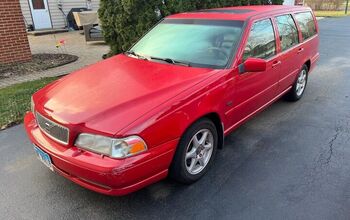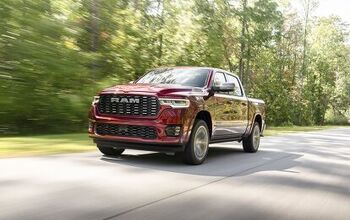NHTSA Estimates Minor Improvement in Roadway Fatalities for 2018

The National Highway Traffic Safety Administration has released its preliminary report on how many people died on U.S. roadways in 2018, indicating that overall traffic deaths had likely fallen by 1 percent. While the information doesn’t exactly justify a party, it’s good news after the last few years attempted to provide new footage for the Red Asphalt series.
As the first major spike in traffic deaths since the “Swinging Sixties,” 2015 freaked everyone out a bit. Save for a few annual hiccups, American traffic deaths (contrasted with its population) had been on the decline for decades. However, by the end of 2016, things looked certain — it was becoming less safe to drive in the United States.
Of course, that’s all relative to how safe we were before. In truth, those driving in 2016 were statistically less likely to die than than anybody traveling prior to 2009. But many worried that the sudden influx of traffic fatalities were part of a new trend, spurred largely by distracted driving, that would send us hurtling back toward the pre-seatbelt era in terms of crash survivability.
While 2017 gave us a minor reprieve from the previous year’s body count, declining by 2 percent, the risks endured on the road improved by an almost negligible margin. It was better, but only just. The NHTSA claimed that 2018 should offer more of the same.
“A statistical projection of traffic fatalities for 2018 shows that an estimated 36,750 people died in motor vehicle traffic crashes,” the agency said. “This represents a slight decrease of about 1.0 percent as compared to the 37,133 fatalities that were reported to have occurred in 2017.”
Despite the total number of deaths appearing to have stabilized, the NHTSA expressed concerns for pedestrian and cyclist safety. The agency is projecting a 4-percent rise in pedestrian fatalities and a 10-percent increase bicycle-related deaths for 2018.
That’s likely the result of more people having moved into urban areas. According to Automotive News, pedestrian deaths accounted for 16 percent of all U.S traffic deaths in 2017, up from 12 percent in 2009. Following the broader trend of urbanization shows that this was similarly true for motor-vehicle crashes, which have proliferated inside of cities while gradually declining in more rural parts of the country. Deaths of people inside vehicles, which reached an all-time high of 80 percent of all traffic deaths in 1996, fell to 67 percent in 2017. However it should be noted that the 33-percent remainder includes pedestrians, bicyclists and motorcyclists.
Check out the NHTSA’s preliminary study for yourself here.
[Image: Photo Spirit/Shutterstock]

A staunch consumer advocate tracking industry trends and regulation. Before joining TTAC, Matt spent a decade working for marketing and research firms based in NYC. Clients included several of the world’s largest automakers, global tire brands, and aftermarket part suppliers. Dissatisfied with the corporate world and resentful of having to wear suits everyday, he pivoted to writing about cars. Since then, that man has become an ardent supporter of the right-to-repair movement, been interviewed on the auto industry by national radio broadcasts, driven more rental cars than anyone ever should, participated in amateur rallying events, and received the requisite minimum training as sanctioned by the SCCA. Handy with a wrench, Matt grew up surrounded by Detroit auto workers and managed to get a pizza delivery job before he was legally eligible. He later found himself driving box trucks through Manhattan, guaranteeing future sympathy for actual truckers. He continues to conduct research pertaining to the automotive sector as an independent contractor and has since moved back to his native Michigan, closer to where the cars are born. A contrarian, Matt claims to prefer understeer — stating that front and all-wheel drive vehicles cater best to his driving style.
More by Matt Posky
Latest Car Reviews
Read moreLatest Product Reviews
Read moreRecent Comments
- 28-Cars-Later Say it ain't so, so reboot #6* isn't going to change anything?[list=1][*]V4-6-8 and High "Tech" 4100.[/*][*]Front wheel drive sooooo modern.[/*][*]NOrthSTARt.[/*][*]Catera wooooo.[/*][*]ATS all the things.[/*][*]We're *are* your daddy's Tesla. [/*][/list=1]
- MaintenanceCosts Can I have the hybrid powertrains and packaging of the RAV4 Hybrid or Prime with the interior materials, design, and build quality of the Mazda?
- ToolGuy I have 2 podcasts to listen to before commenting, stop rushing my homework.
- ToolGuy Please allow me to listen to the podcast before commenting. (This is the way my mind works, please forgive me.)
- ToolGuy My ancient sedan (19 years lol) matches the turbo Mazda 0-60 (on paper) while delivering better highway fuel economy, so let's just say I don't see a compelling reason to 'upgrade' and by the way HOW HAVE ICE POWERTRAIN ENGINEERS BEEN SPENDING THEIR TIME never mind I think I know. 😉


































Comments
Join the conversation
I feel incredibly safe driving today. Of course I grew up in the 50s when motoring was actually somewhat dangerous. 80 mph highway speeds on bias ply tires, drum brakes, and no seat belts.
So, now that they see, all these idiotic nannies don't do anything, they can start removing them